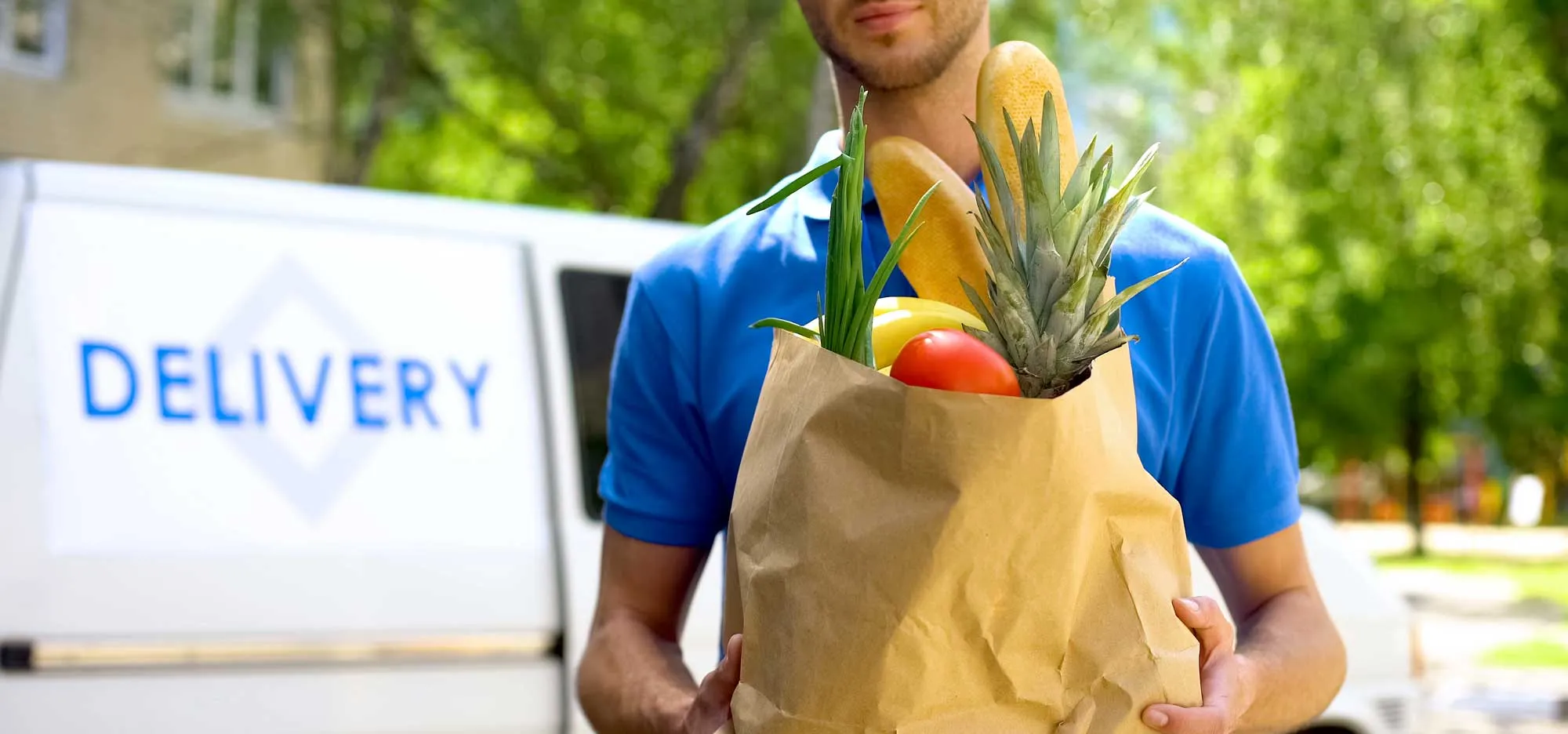The Real Cost of Convenience: Grocery Delivery vs. In-Store Shopping
Comprehensive analysis of delivery fees, markups, and hidden costs to help Chicago families make the smartest grocery shopping decisions for their budget and lifestyle.


The Real Cost of Convenience: Grocery Delivery vs. In-Store Shopping
In today's fast-paced world, grocery delivery has become increasingly popular among Chicago families. With services like Instacart, DoorDash, and Jewel-Osco's own delivery platform, the promise of fresh groceries delivered to your doorstep is undeniably appealing. But what's the real cost of this convenience? This comprehensive analysis breaks down every expense involved in delivery versus traditional in-store shopping to help you make the most informed decision for your family's budget.
The True Price of Convenience: Breaking Down Delivery Costs
When you click "order now" on a grocery delivery app, you're signing up for more than just the cost of your items. The total expense includes multiple fees that can quickly add up, turning a simple grocery run into a significant financial commitment.
Delivery Fees and Service Charges
Most grocery delivery services impose a base delivery fee ranging from $3.99 to $9.99 per order. Jewel-Osco's delivery through Instacart typically charges $3.99 for delivery on orders over $35, while DoorDash and Uber Eats can charge up to $5.99 for similar services. However, these base fees are just the beginning.
Service fees, typically 5-10% of your order total, are automatically added to cover operational costs. On a $150 grocery order—average for a family of four—this translates to an additional $7.50 to $15.00. These fees alone can represent 10-15% of your total grocery budget.
The Hidden Markup: Item-Level Price Inflation
Perhaps the most significant yet overlooked cost is item-level markup. Delivery platforms typically charge 15-25% more per item compared to in-store prices. A gallon of milk that costs $3.49 at Jewel-Osco might appear as $3.99 or $4.29 on delivery apps.
This markup extends across all categories:
- Fresh produce: 20-30% markup
- Meat and dairy: 15-25% markup
- Packaged goods: 10-20% markup
- Specialty items: 25-35% markup
For families following our Chicago grocery savings strategies, these markups can completely negate months of careful coupon clipping and deal hunting.
Tipping and Additional Costs
Delivery drivers typically expect tips of 15-20% of the order total, adding $22.50 to $30 to a $150 order. Peak-time surcharges during busy periods can add another $2-5. Small order fees kick in for purchases under $35, often costing $1.99-2.99.
Time Value Analysis: What's Your Hour Worth?
While delivery costs are tangible, the time savings represent real value that varies significantly based on your circumstances and location within Chicagoland.
In-Store Shopping Time Investment
A typical grocery shopping trip involves:
- Travel time: 15-30 minutes each way (depending on Chicago traffic)
- Shopping time: 45-90 minutes
- Checkout and loading: 10-15 minutes
- Total time investment: 85-165 minutes (1.4-2.75 hours)
For families utilizing strategies from our cultural community savings guides, shopping time may extend further when visiting multiple stores for specialized ingredients and deals.
Calculating Your Time Value
To determine if delivery is financially justified, calculate your effective hourly rate. If you earn $25 per hour and save 2 hours by using delivery, the time savings are worth $50. If delivery costs exceed this amount, in-store shopping provides better value.
However, consider these factors:
- Rush hour traffic in Chicago can double travel time
- Finding parking near popular Jewel-Osco locations
- Weekend crowds increasing shopping time
- Weather conditions affecting travel
Jewel-Osco Delivery Options: Platform Comparison
Jewel-Osco offers delivery through multiple platforms, each with distinct pricing structures and service levels.
Instacart (Primary Partner)
Instacart serves as Jewel-Osco's primary delivery partner, offering:
- Delivery fee: $3.99 (orders over $35)
- Express delivery: $9.99 (under 2 hours)
- Item markups: 15-20% average
- Instacart+ membership: $99/year (free delivery on orders over $35)
DoorDash and Uber Eats
These platforms also partner with select Jewel-Osco locations:
- Higher delivery fees: $4.99-$5.99
- Steeper markups: 20-25%
- Less reliable inventory accuracy
- Limited to smaller store selections
The Coupon Clipping Dilemma: Digital vs. Physical Savings
One of the most significant hidden costs of delivery is the reduced ability to maximize savings through coupons and promotions.
In-Store Advantages for Coupon Users
Traditional shopping allows access to:
- Physical manufacturer coupons from newspapers
- Store-specific clearance items
- End-cap promotions
- Manager's special markdowns
- Immediate price-matching opportunities
The Jewel-Osco Coupon Clipper browser extension becomes less effective with delivery since many digital promotions require in-store verification or aren't properly applied through third-party platforms.
Digital-Only Limitations
Delivery platforms often restrict:
- Manufacturer coupon stacking
- Store loyalty program benefits
- Clearance item availability
- Special promotional pricing
Families following our coupon stacking strategies might find their monthly savings dropping by 30-50% when switching to delivery.
Cost-Benefit Analysis: When Delivery Makes Sense
Despite the higher costs, delivery can provide excellent value in specific circumstances.
High-Value Scenarios for Delivery
Medical or Mobility Constraints: For elderly customers or those with disabilities, delivery eliminates transportation barriers and physical strain. Our grocery savings for seniors guide provides strategies for maximizing value even with delivery services.
Time-Critical Situations: Parents with multiple young children or professionals working 60+ hour weeks may find the time savings justify the expense.
Weather Emergencies: Chicago's harsh winters make delivery valuable during snowstorms or extreme cold when travel becomes dangerous.
Large Household Orders: Bulk shopping for families of 6+ members can make delivery fees a smaller percentage of the total cost.
Suburban vs. Urban Considerations
Location significantly impacts the value proposition:
Suburban Chicago Families: Living in areas like Naperville or Schaumburg often means longer travel times to grocery stores, making delivery more attractive. Families in these areas might benefit from our suburban ethnic markets guide to understand regional shopping patterns.
Urban Chicago Residents: Those near multiple Jewel-Osco locations might find in-store shopping more convenient and cost-effective, especially when combining trips with other errands.
Smart Hybrid Shopping Strategies
The most budget-conscious approach often involves combining both delivery and in-store shopping strategically.
The 80/20 Approach
Purchase 80% of staples through delivery for convenience, then shop in-store for:
- Fresh produce requiring personal selection
- Clearance and marked-down items
- Specialty items with significant markups
- Products requiring coupons or promotions
Bulk Delivery Orders
Minimize per-item delivery costs by:
- Ordering every 2-3 weeks instead of weekly
- Combining orders with neighbors or family
- Focusing on non-perishable staples
- Saving perishables for in-store trips
Seasonal Considerations
Adjust strategies based on Chicago's seasons:
- Winter: Increase delivery frequency during harsh weather
- Spring/Summer: Return to in-store shopping for fresh seasonal produce
- Holiday seasons: Shop in-store for specialty items and holiday deals
Similar seasonal approaches work well for families following our cultural celebration guides.
Technology Tools for Smart Decision-Making
Several apps and browser extensions can help optimize your grocery shopping decisions.
Price Comparison Tools
Use tools like:
- Flipp: Compare prices across multiple stores
- Basket: Track price histories
- Jewel-Osco Coupon Clipper: Maximize in-store savings
- Honey: Find online promo codes for delivery platforms
Budget Tracking Apps
Monitor spending patterns across delivery and in-store purchases:
- Mint: Categorize grocery expenses
- YNAB: Budget for delivery fees separately
- Receipt tracking apps: Compare total costs monthly
The Environmental and Social Impact
Consider broader implications beyond personal finances:
Environmental Costs
Delivery generates:
- Additional vehicle emissions from delivery routes
- Increased packaging waste
- Refrigerated transport energy consumption
Supporting Local Employment
In-store shopping supports:
- Local Jewel-Osco store employees
- Community economic activity
- Personal relationships with store staff
Making the Right Choice for Your Family
The decision between delivery and in-store shopping isn't binary—it's about finding the right balance for your specific situation.
Financial Breakeven Analysis
Calculate your monthly grocery delivery costs:
- Base delivery fees: $16-40 (4 orders)
- Service fees: $30-60
- Item markups: $75-150
- Tips: $90-120
- Total monthly premium: $211-370
If this amount represents less than 10% of your household income and provides significant time/convenience value, delivery can be justified. However, families spending this premium could instead invest in bulk shopping, better kitchen organization, or meal planning systems.
Decision Framework
Choose delivery when:
- Time savings exceed $25-30 per hour
- Physical limitations make shopping difficult
- Weather or safety concerns exist
- Large orders justify the percentage costs
Choose in-store shopping when:
- You enjoy the shopping experience
- Budget constraints require maximum savings
- You need fresh produce selection control
- Coupon savings exceed delivery costs
Conclusion: Finding Your Sweet Spot
The real cost of grocery delivery extends far beyond advertised delivery fees. For Chicago families, the total premium typically ranges from $200-400 monthly compared to in-store shopping. However, this cost can be justified when time savings, convenience, and personal circumstances align.
The key is honest evaluation of your priorities, budget, and lifestyle. Many families find success with hybrid approaches, using delivery strategically while maintaining in-store shopping for maximum savings and product selection.
Remember that grocery shopping isn't just about cost—it's about nourishing your family efficiently and sustainably. Whether you choose delivery, in-store shopping, or a combination of both, the Jewel-Osco Coupon Clipper can help maximize your savings regardless of your preferred shopping method.
The most important factor is making an informed decision based on complete cost understanding rather than just the convenience appeal. By analyzing all expenses and considering your family's unique circumstances, you can choose the approach that provides the best value for your specific situation.